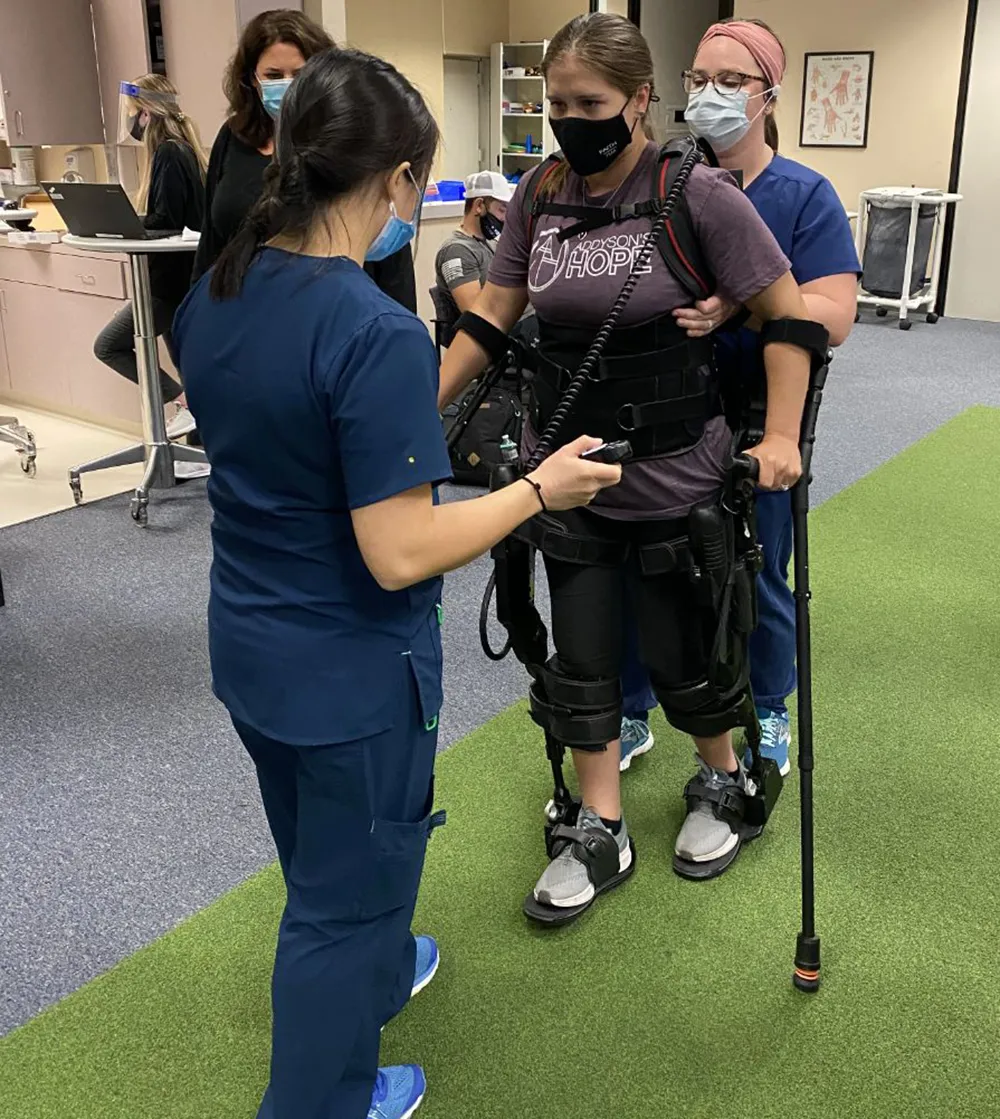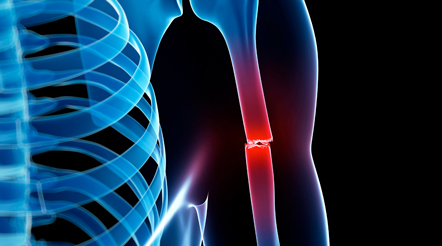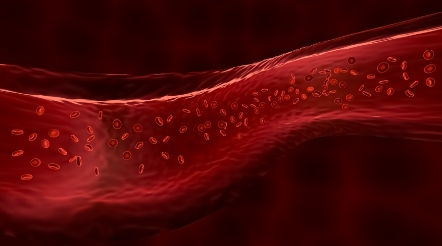
President’s letter
2023 Metrics
Cycle of Translation
Visionary Gifts

Discovery to Clinic

Innovative Education

Translational Luminaries
Introduction
Jerold B. Katz Academy of Translational Research
Infectious Diseases Research Fund
Houston Methodist Dr. Mary and Ron Neal Cancer Center
Ann Kimball and John W. Johnson Center for Cellular Therapeutics at Houston Methodist
The Food & Health Alliance within the Houston Methodist Lynda K. and David M. Underwood Center for Digestive Disorders, Immunology Center and the Fondren Inflammation Collaborative
Houston Methodist Cockrell Center for Advanced Therapeutics
Paula and Joseph C. “Rusty” Walter III
Translational Research Initiative
COVID-19 Studies
Outcomes Research
Houston Methodist Researchers Are Developing Mobile Apps to Improve Clinical Outcomes in Patients
Houston Methodist-Developed Algorithm May Improve Management and Outcomes in Critically ill COVID-19 Patients
Wearable Devices May Provide New Treatment Option for Glioblastoma
Restorative Medicine
Houston Methodist Investigators Nanotechnology Investigators Awarded Prestigious Grants from the Department of Defense
Houston Methodist Advances Research into Neural Prosthetics
An Innovative Approach to Treat Even the Most Stubborn-to-Heal Fractures
Cell Encapsulation May Hold the Key to Preventing Cell Transplant Rejection
Noninvasive Spinal Stimulation Works to Restore Movement After Spinal Cord Injury
Houston Methodist, Rice University, Baylor College of Medicine Design Noninvasive Tech to Help Remove Brain’s Metabolic Waste
Precision Medicine
Novel Drug Combination Can Target Triple-Negative Breast Cancer for Treatment
Importance of the Coronary Artery Calcium Score in Risk Assessment and Prevention of Atherosclerotic Cardiovascular Disease
A Houston Methodist and Purdue University Breakthrough May Result in a More Effective Tuberculosis Vaccine
Cancer Cell Type (Seed) and Tumor Microenvironment (Soil) Control Therapeutic Antibody Delivery and Efficacy
New Virtual Intensive Care Unit Simultaneously Improves Patient Care and Bed Capacity
result
Introduction
Joint Weill Cornell–Houston Methodist Academic Institute Doctoral Program Welcomes its Inaugural Class
Visionary EnMed Program Soars to New Heights
Neural Control of Organ Degeneration and Regeneration (NeuralCODR) Training Program
Faculty and Research Development
Graduate Medical Education



Science in Service
of
Medicineresult
President's letter
2021 Metrics
Cycle of Translation
Visionary Gifts of Hope


Jerold B. Katz Academy of Translational Research

Infectious Diseases Research Fund

Introduction

Ann Kimball and John W. Johnson Center for Cellular Therapeutics at Houston Methodist

Houston Methodist Dr. Mary and Ron Neal Cancer Center

The Food & Health Alliance within the Houston Methodist Lynda K. and David M. Underwood Center for Digestive Disorders, Immunology Center and the Fondren Inflammation Collaborative

Houston Methodist Cockrell Center for Advanced Therapeutics

Paula and Joseph C. “Rusty” Walter III Translational Research Initiative

From Discovery to Clinic


What is "Discovery to Clinic"?

Restorative Medicine


Houston Methodist Advances Research into Neural Prosthetics

Noninvasive Spinal Stimulation Works to Restore Movement After Spinal Cord Injury

An Innovative Approach to Treat Even the Most Stubborn-to-Heal Fractures

Cell Encapsulation May Hold the Key to Preventing Cell Transplant Rejection

Houston Methodist, Rice University, Baylor College of Medicine Design Noninvasive Tech to Help Remove Brain’s Metabolic Waste

Houston Methodist Investigators Nanotechnology Investigators Awarded Prestigious Grants from the Department of Defense

Precision Medicine


New Virtual Intensive Care Unit Simultaneously Improves Patient Care and Bed Capacity

Cancer Cell Type (Seed) and Tumor Microenvironment (Soil) Control Therapeutic Antibody Delivery and Efficacy

Novel Drug Combination Can Target Triple-Negative Breast Cancer for Treatment

A Houston Methodist and Purdue University Breakthrough May Result in a More Effective Tuberculosis Vaccine

Importance of the Coronary Artery Calcium Score in Risk Assessment and Prevention of Atherosclerotic Cardiovascular Disease

Translational Luminaries




Discovery to Clinic

Restorative Medicine
Noninvasive Spinal Stimulation Works to Restore Movement After Spinal Cord Injury


Noninvasive Spinal Stimulation Works to Restore Movement After Spinal Cord Injury
For someone who is paralyzed, regaining the ability to control a full weight-bearing standing posture without assistance is a key goal. Not only does standing and maintaining balance provide a greater level of physical independence and mobility, it also is the foundation for regaining the ability to walk, including stepping with assistance from robotic devices.

Dimitry Sayenko, MD, PhD
Spearheading the efforts to help patients recover loss of movement after a spinal cord injury is Dimitry Sayenko, MD, PhD, assistant professor in Houston Methodist’s Department of Neurosurgery. In previous clinical studies, Sayenko and his team found that spinal cord stimulation can help regain certain motor functions in people with paralysis due to spinal cord injury.

Building on this work, the team recently published several studies, including two in the Journal of Clinical Medicine and one in Neuroimage: Reports, that examine how noninvasive spinal stimulation modulates the brain connections with the spinal cord. The insights gleaned from their studies, they posited, could be important considerations needed to optimize and predict the benefits of future spinal cord stimulation interventions.
The spinal cord includes neuronal networks that receive and relay information from the upper and lower limbs and body and communicate with the brain. These spinal networks influence movement and sensory processing, among other functions. The team found that the motor commands coming from both the brain and from external stimulation likely increase the activity of the spinal interneurons that then help regain movement after spinal cord injury.
Sayenko is also collaborating with industry partner ANEUVO (formerly called Niche Biomedical), Kennedy Krieger Institute, and Shirley Ryan AbilityLab on a project to evaluate the effects of transcutaneous spinal stimulation on regaining upper limb function in individuals with tetraplegia due to spinal cord injury. This pilot clinical trial is finished, and the collaborative team is preparing to launch the FDA-regulated pivotal clinical trial.
More from Discovery to Clinic














